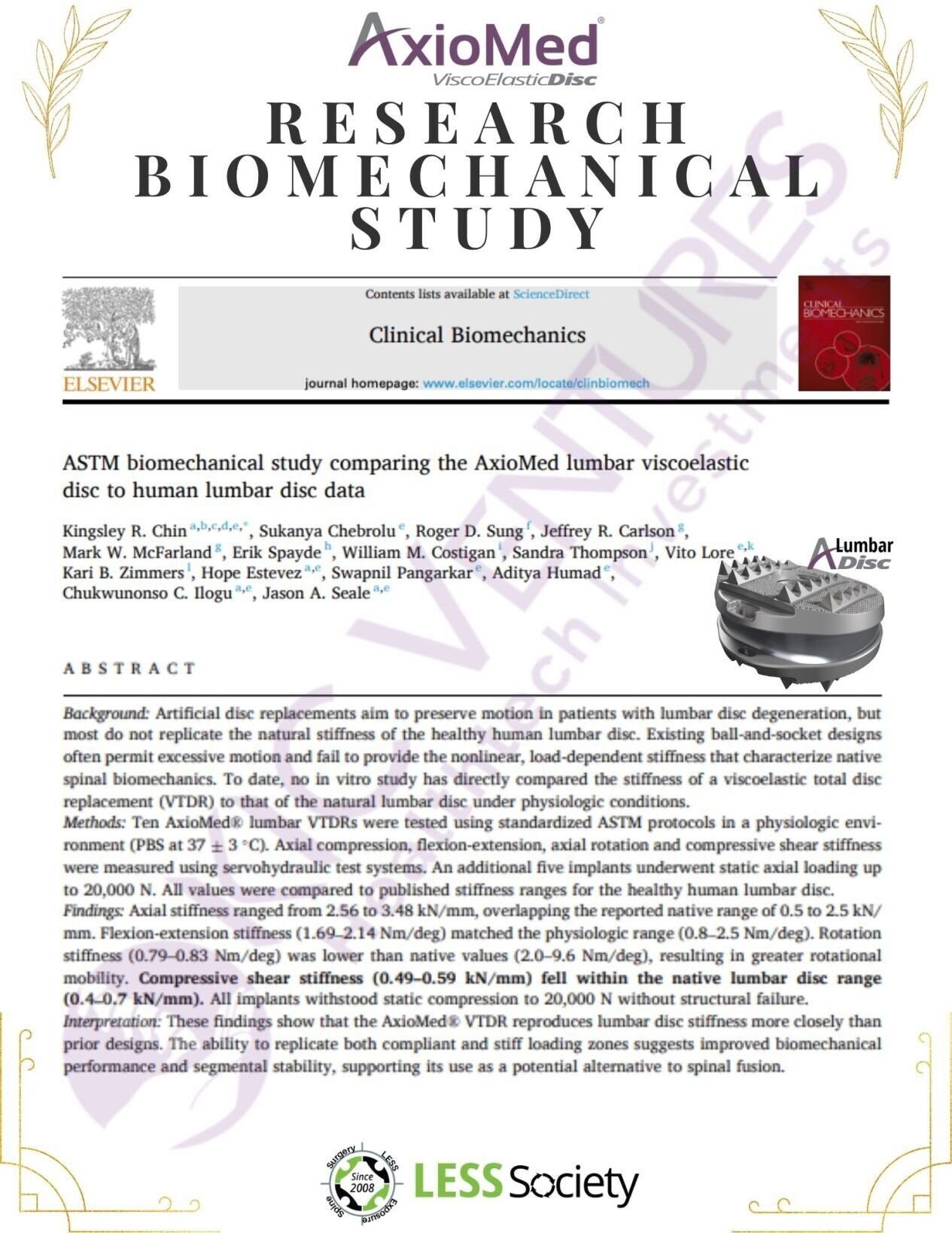Scientists have unveiled a spinal disc that replicates natural human disc motion, drawing on a landmark biomechanical study. This breakthrough could usher in a new era of motion-preserving spine care, potentially transforming treatments for degenerative back conditions.
Scientists Develop AxioMed Spinal Disc Replacement That Truly Mimics Healthy Human Disc — A Game-Changer in Spine Surgery

Key Takeaways:
- Researchers developed AxioMed’s viscoelastic lumbar disc to mimic a healthy human disc.
- A landmark biomechanical study supports its ability to replicate natural mechanics.
- The design aims to preserve motion, unlike traditional spinal fusion procedures.
- KIC Ventures is credited with backing this innovative project.
- This finding may shift standard spine-care approaches toward motion preservation.
A New Kind of Spinal Disc
Scientists have announced the development of AxioMed’s viscoelastic lumbar disc, a breakthrough that sets out to imitate the function of a healthy human disc in the spine. By providing proper cushioning and natural movement, the implant is positioned as a crucial advance in orthopedics.
What the Biomechanical Study Revealed
A landmark biomechanical study forms the backbone of this breakthrough. The research indicates that AxioMed’s disc is the first to truly replicate the mechanical behaviors of a healthy lumbar disc, putting it in a category of its own. This finding is particularly significant for patients who are candidates for motion-preserving procedures rather than traditional fusion surgeries.
A Shift Toward Motion Preservation
In many spinal procedures, especially those involving fusions, patients lose a portion of their natural range of movement following surgery. This new disc is designed to maintain normal motion, which could bolster patient outcomes. By allowing flexibility, it may reduce stress on adjoining discs, a persistent concern in traditional fusion-based methods.
Perspective from KIC Ventures
The development, credited to KIC Ventures, combines advanced engineering with clinical insights. According to the original release, the disc’s viscoelastic properties could radically change how surgeons approach degenerative spinal conditions. Focusing on the natural biomechanics of the spine, this implant hopes to offer patients a more functional and sustainable recovery.
Looking Ahead
As spine care moves toward methods that preserve rather than restrict motion, AxioMed’s disc signals a new era of innovation. Continued research and practical use of this technology may inspire further enhancements, possibly reshaping the future of orthopedic and spine surgery worldwide.











